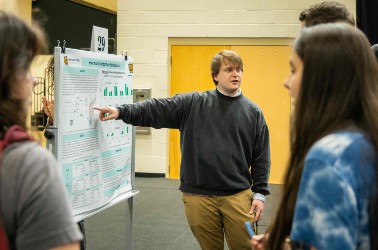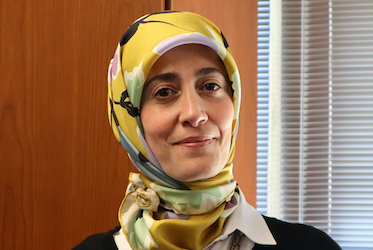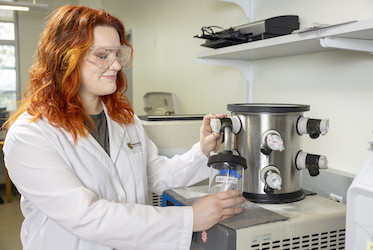
Laser Focused
KENNESAW, Ga. | Jul 9, 2019
KSU researcher awarded his first NSF grant in plasma physics

Kennesaw State University’s Jeremy Gulley, associate professor of physics, has been awarded a three-year grant from the National Science Foundation/Department of Energy Partnership in Plasma Science and Engineering to study nanoscale laser optics.
Totaling more than $116,000, this is Gulley’s first NSF grant, which will cover his research to bridge the knowledge gap between two fields in optical physics – laser light propagation and the interaction between laser light and semiconductor nanowires. These are wires that are not visible through a conventional microscope.
According to Gulley, semiconductor wires, such as those used to make silicon transistors in computer chips, are highly prized in the electronics industry because their conductivity can be controlled, unlike metal wires such as copper. As electronic components, these semiconductor wires are increasingly shrinking in size, and as they do the behavior of the charged particles that carry the current changes dramatically.
“Even though you have the advantage of packing a lot of electronics in a very tiny space, the quantum physics behavior you begin to see is quite different from what we learn in introductory science classes,” he said. “In particular, you cannot make a wire smaller than a string of atoms because the wires themselves are made of atoms.”
Gulley’s traditional research area has been in laser optics, more specifically what happens when powerful laser pulses are used to temporarily or permanently damage optical laboratory components. He collaborated with scientists at the Air Force Research Laboratory (AFRL) located at the Kirtland Air Force Base in Albuquerque, N.M., to perform such simulations with his calculations. His effort was funded by the U.S. Air Force as part of the Young Investigator Program and the Summer Faculty Fellowship Program.
As that funding was coming to an end, Gulley said he wanted to explore other avenues of research and found a common interest with another scientist at the Space Vehicles Directorate of AFRL, looking at how laser pulses would affect solids on the nanoscale, particularly the wires that might power optical sensors in satellites. The preliminary data for the NSF grant came out of this original work.

For his new nanoscale laser optics project, Gulley plans to write code and analyze numerical simulations with the help of KSU undergraduates in physics. He then hopes to bring this project to the experimental phase with his collaborators at the Air Force Research Laboratory in which his theoretical calculations would be compared to what is actually happening on a constructed nanowire array, a large arrangement of wires.
“I am thrilled about this NSF grant,” said Gulley. “It gives me the opportunity to explore this area of research with undergraduates and expose them to a very important expanding field in both physics and optoelectronics.”
—Joëlle Walls
Related Stories
A leader in innovative teaching and learning, Kennesaw State University offers undergraduate, graduate and doctoral degrees to its more than 45,000 students. Kennesaw State is a member of the University System of Georgia with 11 academic colleges. The university’s vibrant campus culture, diverse population, strong global ties and entrepreneurial spirit draw students from throughout the country and the world. Kennesaw State is a Carnegie-designated doctoral research institution (R2), placing it among an elite group of only 7 percent of U.S. colleges and universities with an R1 or R2 status. For more information, visit kennesaw.edu.


















